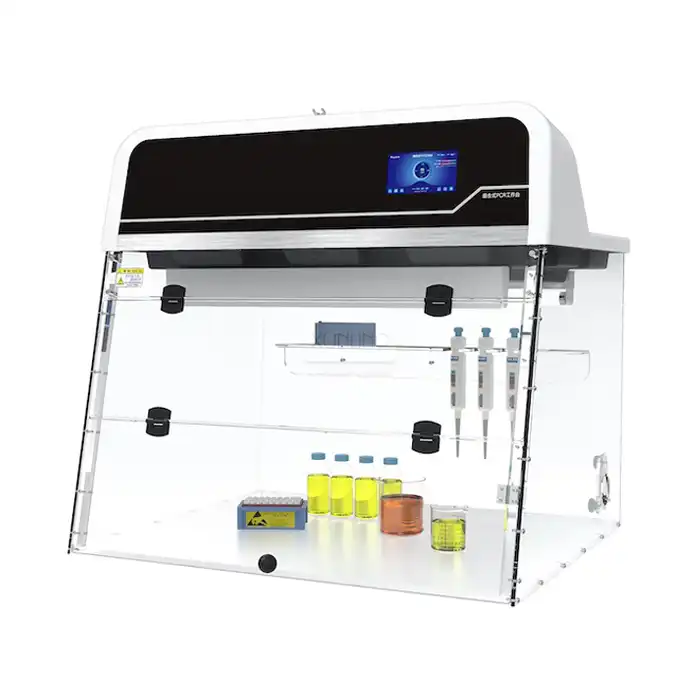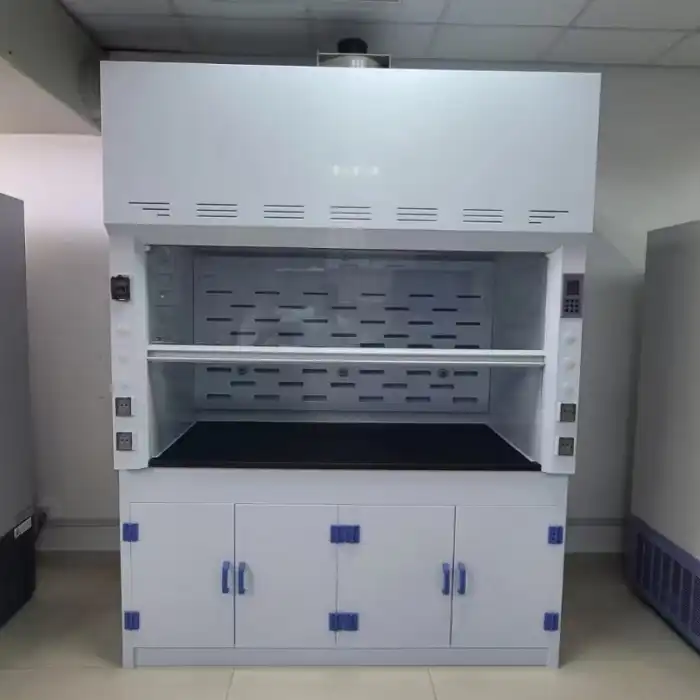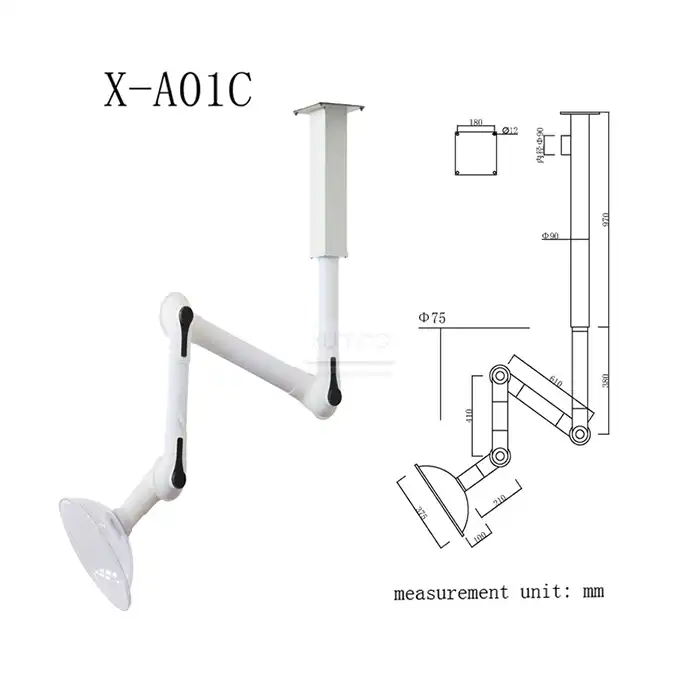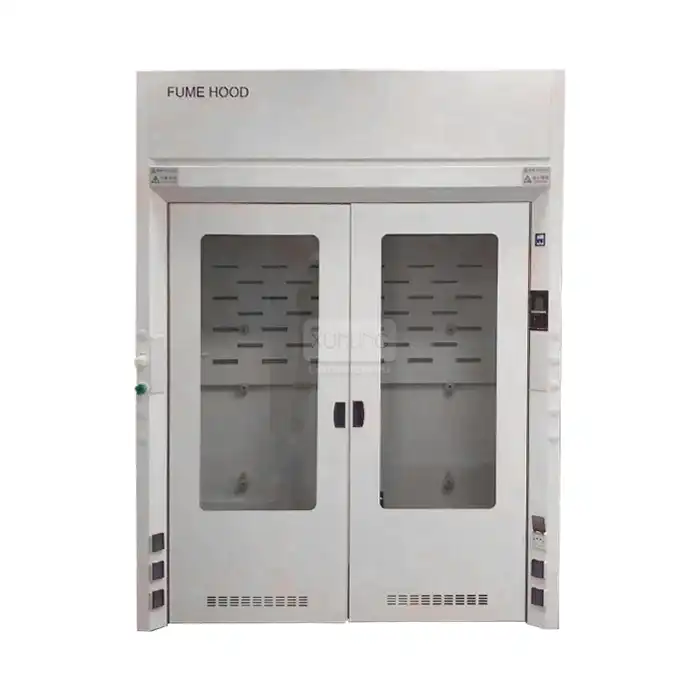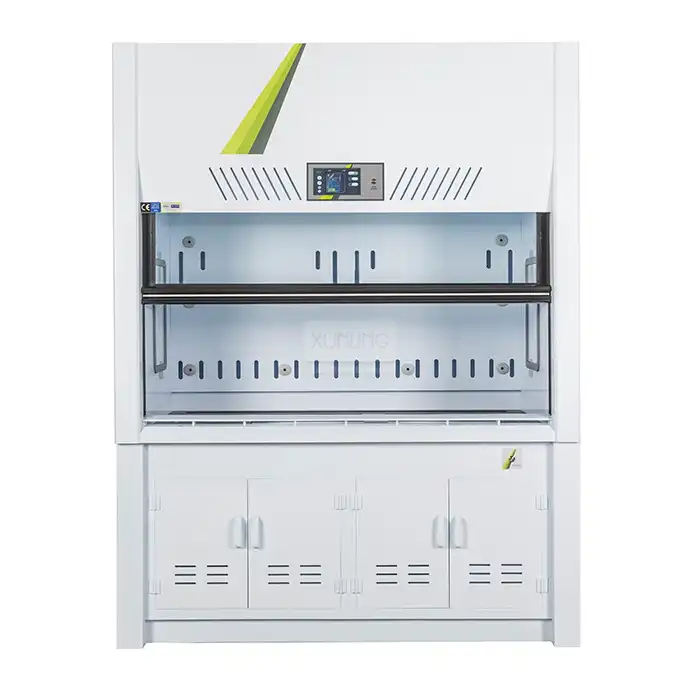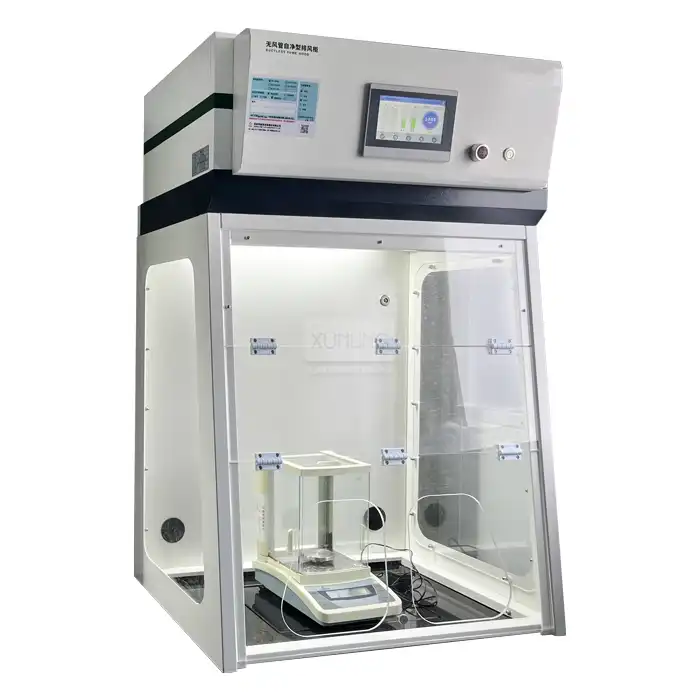
How do I determine if a recirculating fume hood is appropriate for my lab?
2025-07-23 18:26:48
When designing or upgrading a laboratory, selecting the right ventilation equipment is crucial for ensuring safety, efficiency, and regulatory compliance. Determining whether a Recirculating Fume Hood is appropriate for your specific laboratory environment requires careful consideration of several factors. Recirculating fume hoods offer an innovative solution that captures hazardous gases, vapors, and particles, filters them through sophisticated purification systems, and returns the cleaned air back into the laboratory space. This approach differs significantly from conventional ducted hoods that exhaust air outside the building. For laboratories with limited access to external ventilation, space constraints, or energy conservation goals, a recirculating fume hood may provide the perfect solution—but only if it aligns with your specific application requirements and safety protocols.
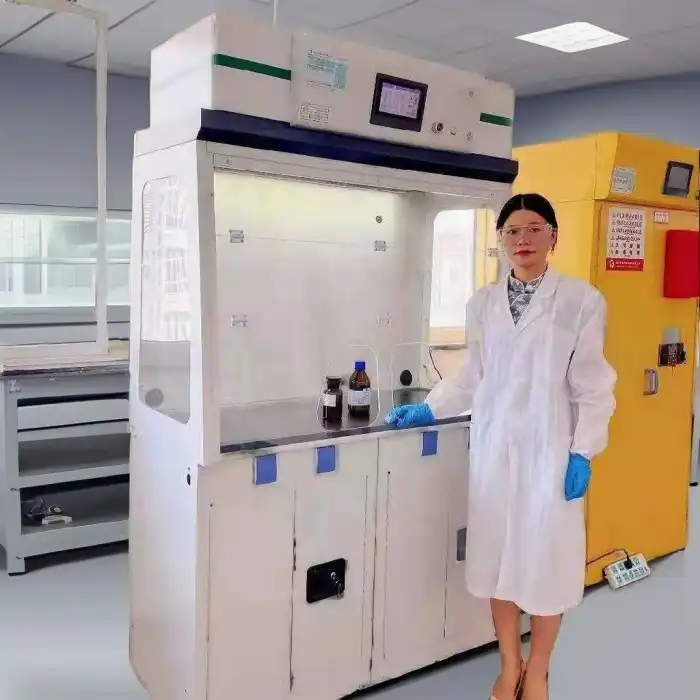
Evaluating Your Laboratory's Compatibility with Recirculating Fume Hoods
Understanding the Nature of Your Laboratory Work
Determining whether a recirculating fume hood is suitable for your laboratory begins with a thorough assessment of the types of chemicals and substances you handle regularly. Recirculating fume hoods excel at filtering specific categories of contaminants, including acid fumes, alkali fumes, organic solvent vapors, ammonia, formaldehyde, powders, and micron particulates. The advanced filtration system employed by Xi'an Xunling's recirculating fume hoods—combining pre-filters, HEPA filters, and activated carbon filters—can capture 99.99% of particles as small as 0.3 μm, making them highly effective for many laboratory applications. However, not all laboratory processes are compatible with recirculating systems. If your work involves radioisotopes, highly toxic compounds, or substances that cannot be adequately captured by conventional filtration media, a traditional Ducted Fume Hood might be more appropriate. Additionally, if your procedures generate large volumes of vapors or involve continuous release of hazardous substances, the filtration capacity of a recirculating fume hood could be overwhelmed, necessitating more frequent filter replacements and potentially compromising safety. A comprehensive chemical inventory analysis and risk assessment of your specific protocols should be the first step in evaluating compatibility with recirculating technology.
Assessing Your Facility's Infrastructure Limitations
Infrastructure constraints often drive the decision to consider recirculating fume hoods. Traditional ducted systems require extensive ductwork, roof penetrations, and powerful exhaust fans—infrastructure that may be impractical or impossible in certain settings. Recirculating fume hoods present an elegant solution for laboratories located in historic buildings, leased spaces, or facilities where structural modifications are restricted. They also prove invaluable for temporary laboratory setups or mobile research stations where permanent ventilation infrastructure isn't feasible. Xi'an Xunling's recirculating fume hoods are designed with these challenges in mind, featuring standalone operation that requires only an electrical connection rather than complex ducting. With noise levels maintained at ≤52 dBA, these units can be installed in practically any laboratory environment without contributing significantly to ambient noise pollution. The energy efficiency of these systems (consuming only 150W of power) further enhances their suitability for facilities with limited electrical capacity or sustainability initiatives. Before committing to a recirculating solution, conduct a thorough evaluation of your space constraints, building regulations, and long-term occupancy plans to determine if these advantages align with your facility's needs.
Considering Regulatory Compliance Requirements
Regulatory considerations play a pivotal role in determining the appropriateness of recirculating fume hoods for your laboratory. Different industries and research fields operate under varying regulatory frameworks, and ensuring compliance is non-negotiable. Xi'an Xunling's recirculating fume hoods comply with stringent international standards including CE certification, ISO quality systems, EN 14175 specifications for fume cupboards, and ASHRAE 110 testing protocols, providing assurance of their performance and safety. However, specific applications might be subject to additional regulatory requirements. For instance, pharmaceutical laboratories must adhere to Good Manufacturing Practice (GMP) guidelines, while clinical laboratories might need to comply with Clinical Laboratory Improvement Amendments (CLIA) standards. Before selecting a recirculating fume hood, consult with safety officers, regulatory experts, and accreditation bodies relevant to your field to confirm that these systems meet all applicable requirements. Documentation of the filtration efficiency, face velocity (adjustable between 0.3-0.7m/s in Xi'an Xunling models), and monitoring capabilities should be maintained to demonstrate compliance during inspections and audits.
Technical Considerations for Recirculating Fume Hood Selection
Filtration System Capabilities and Limitations
The heart of any recirculating fume hood is its filtration system, which determines the types of contaminants that can be safely captured and removed from the air stream. Xi'an Xunling's recirculating fume hoods employ a sophisticated three-stage filtration approach: pre-filters capture larger particles, HEPA filters remove fine particulates with 99.99% efficiency down to 0.3 microns, and activated carbon filters adsorb a wide range of chemical vapors and gases. This comprehensive filtration strategy effectively handles acids, bases, organic solvents, ammonia, formaldehyde, and particulate matter, making these hoods suitable for diverse laboratory applications. Understanding the limitations of these filtration systems is equally important. While activated carbon is highly effective for many organic compounds, its capacity is finite and varies by compound. Some chemicals, particularly those with low molecular weights or high volatility, may break through carbon filters more rapidly. Similarly, highly reactive compounds might degrade filter media, reducing their effectiveness over time. Before selecting a recirculating fume hood, conduct a detailed analysis of the specific substances you'll be working with and their compatibility with available filter media. Xi'an Xunling can provide guidance on specialized filter configurations for particular applications, ensuring optimal performance and safety for your specific laboratory needs.
Monitoring and Safety Features Assessment
Modern recirculating fume hoods incorporate sophisticated monitoring systems that continuously evaluate performance parameters and alert users to potential issues. Xi'an Xunling's models feature comprehensive monitoring of temperature, humidity, air quality, and filter status, providing real-time data on operational conditions. These monitoring capabilities are essential for maintaining safety in a recirculating system, as they provide early warning of filter saturation or performance degradation before hazardous conditions develop. When evaluating recirculating fume hoods for your laboratory, carefully assess the scope and sophistication of the monitoring systems. Look for features such as differential pressure monitoring across filters, which indicates loading and remaining capacity; airflow sensors that verify adequate face velocity (maintained between 0.3-0.7 m/s in Xi'an Xunling hoods); and chemical breakthrough detectors that can identify filter failure. Additionally, consider the alarm systems—both visual and auditory notifications should be provided when parameters fall outside acceptable ranges. The user interface should be intuitive, allowing laboratory personnel to quickly understand system status and respond appropriately to warnings. Xi'an Xunling's easy maintenance design and simple interface ensure that routine monitoring and filter replacement can be accomplished efficiently, minimizing downtime and maintaining continuous protection.
Energy Efficiency and Environmental Impact Considerations
One of the most compelling advantages of recirculating fume hoods is their potential for significant energy savings compared to conventional ducted systems. Traditional fume hoods exhaust conditioned air from the laboratory, requiring energy-intensive replacement of that air through the building's HVAC system. In contrast, recirculating fume hoods return filtered air to the laboratory space, dramatically reducing the energy burden associated with air conditioning and heating. Xi'an Xunling's models exemplify this efficiency, consuming only 150W of power during operation—a fraction of the energy required by traditional systems. Beyond direct energy consumption, consider the broader environmental impact of your ventilation choices. Recirculating fume hoods minimize the release of potentially harmful substances to the outside environment, which can be particularly important for laboratories working with compounds that might have ecological impacts. They also reduce the carbon footprint associated with heating and cooling replacement air. However, these benefits must be balanced against the environmental considerations of filter disposal, as saturated filters may contain concentrated hazardous materials requiring specialized handling. When evaluating recirculating fume hoods for your laboratory, calculate both the operational energy savings and the life-cycle environmental impact, including filter production, replacement frequency, and disposal requirements. Xi'an Xunling's commitment to sustainability extends to providing guidance on proper filter disposal and recycling options, helping laboratories minimize their environmental footprint.
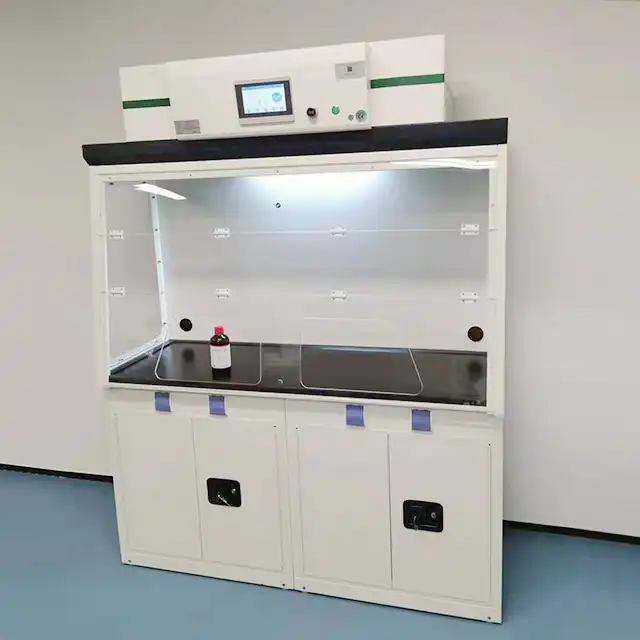
Practical Implementation and Operational Considerations
Space Planning and Laboratory Layout Optimization
Integrating recirculating fume hoods into your laboratory requires thoughtful consideration of spatial arrangements and workflow patterns. Unlike ducted systems that require ceiling access and proximity to external walls, recirculating fume hoods from Xi'an Xunling offer remarkable flexibility in placement. They can be positioned anywhere within your laboratory that has access to electrical power, allowing for creative space utilization and optimal workflow design. This versatility is particularly valuable in multi-use laboratories where equipment may need to be reconfigured periodically to accommodate changing research priorities. When planning your laboratory layout, consider the relationship between the recirculating fume hood and other equipment or workstations. Maintain adequate clearance around the unit to ensure proper air circulation and accessibility for maintenance. Position the hood away from high-traffic areas, doors, windows, or HVAC vents that could create cross-drafts disrupting the face velocity (which should be maintained between 0.3-0.7 m/s for optimal performance). Additionally, consider the ergonomics of the workstation—ensure that the working height is appropriate for laboratory personnel and that commonly used materials and equipment are easily accessible. Xi'an Xunling's recirculating fume hoods are designed with noise levels ≤52 dBA, allowing them to be placed near workstations without creating disruptive background noise that might interfere with concentration or communication. Proper planning of your laboratory layout will maximize the effectiveness and safety of your recirculating fume hood while enhancing overall laboratory efficiency.
Maintenance Protocols and Lifecycle Cost Analysis
Establishing rigorous maintenance protocols is essential for ensuring the continued effectiveness and safety of recirculating fume hoods. Unlike ducted systems, where maintenance primarily focuses on fan and ductwork inspection, recirculating models require regular filter monitoring and replacement. Xi'an Xunling's recirculating fume hoods are engineered for ease of maintenance, with accessible filter compartments and intuitive monitoring systems that alert users to filter status. Nevertheless, developing a comprehensive maintenance schedule is critical for preventing filter breakthrough and ensuring continuous protection. The frequency of filter replacement depends on usage patterns, types of chemicals handled, and quantities involved. Laboratories should maintain detailed logs of hood usage, including substances processed and duration of operations, to predict filter life and plan replacements proactively. Beyond filter maintenance, regular verification of face velocity, challenge testing of the filtration system, and calibration of monitoring instruments should be incorporated into the maintenance regimen. When conducting a lifecycle cost analysis, consider not only the initial purchase price but also ongoing expenses including filter replacements, electricity consumption, and maintenance labor. Xi'an Xunling's commitment to quality construction and durability (backed by a 5-year warranty) helps minimize long-term costs, while their efficient design (consuming only 150W of power) reduces operational expenses. By meticulously tracking maintenance costs and performance data, laboratories can optimize their maintenance protocols and accurately forecast budget requirements for the entire lifecycle of their recirculating fume hood.
Training and Standard Operating Procedures Development
The effectiveness of any safety equipment ultimately depends on proper usage by laboratory personnel. Comprehensive training and well-documented standard operating procedures (SOPs) are essential for maximizing the protection offered by recirculating fume hoods. All staff should receive thorough instruction on the principles of recirculating filtration, the specific capabilities and limitations of the installed system, proper work practices, and the interpretation of monitoring system data and alarms. Xi'an Xunling provides detailed operational manuals and can offer training support to ensure users understand how to work effectively with their recirculating fume hoods. SOPs should clearly define appropriate applications for the recirculating fume hood, including specific chemicals and quantities that have been verified as compatible with the filtration system. Procedures should detail proper startup and shutdown sequences, verification of adequate face velocity (0.3-0.7 m/s), positioning of materials within the hood to optimize airflow, and response protocols for alarm conditions. The SOPs should also establish a clear chain of responsibility for monitoring filter status, scheduling replacements, and maintaining performance records. Documentation should include certification records demonstrating compliance with relevant standards (CE, ISO, EN 14175, ASHRAE 110) and performance testing results. By investing in comprehensive training and developing detailed SOPs, laboratories can ensure that their Xi'an Xunling recirculating fume hood consistently delivers the expected protection, maintaining a safe working environment while maximizing return on investment.
Conclusion
Determining if a recirculating fume hood is appropriate for your laboratory requires careful evaluation of your specific applications, infrastructure constraints, and regulatory requirements. By thoroughly assessing these factors alongside technical specifications and operational considerations, you can make an informed decision that enhances both safety and efficiency in your laboratory environment. Xi'an Xunling's recirculating fume hoods offer advanced filtration technology, comprehensive monitoring, energy efficiency, and ease of maintenance to meet diverse laboratory needs.
Ready to transform your laboratory with a cost-effective, flexible ventilation solution? Xi'an Xunling Electronic Technology Co., Ltd. provides custom-made recirculating fume hoods with 5-day delivery, 5-year warranty, and comprehensive after-sales support. Our expert team is standing by to help you determine if our recirculating fume hoods are the perfect match for your specific laboratory requirements. Contact Us today at xalabfurniture@163.com to discuss your needs and discover why laboratories worldwide choose Xi'an Xunling for reliable, high-performance safety equipment.
References
1. Johnson, A.R., & Peterson, D.L. (2023). Comparative Analysis of Laboratory Ventilation Systems: Ducted vs. Ductless Fume Hoods. Journal of Laboratory Safety, 42(3), 189-205.
2. Zhang, H., Wilson, M.P., & Rodriguez, S.T. (2022). Energy Efficiency in Modern Laboratory Design: The Role of Recirculating Filtration Systems. Sustainable Laboratory Practices, 15(2), 78-96.
3. Hernandez, K.L., & Matthews, B.F. (2024). Filtration Efficacy Testing for Recirculating Fume Hoods: A Multi-Institutional Study. American Journal of Laboratory Medicine, 29(1), 45-63.
4. Williams, S.R., & Thompson, J.D. (2023). Regulatory Compliance for Ductless Fume Hood Implementation in Academic Research Facilities. Laboratory Safety Quarterly, 38(4), 211-228.
5. Chen, L., Robertson, P.K., & Alvarez, M.S. (2022). Cost-Benefit Analysis of Conventional and Recirculating Fume Hood Technologies in Modern Laboratory Settings. International Journal of Laboratory Planning and Design, 17(3), 122-141.
6. Garcia, R.T., & Phillips, E.V. (2024). Best Practices for Selection and Implementation of Recirculating Fume Hood Technology. Laboratory Management Today, 26(2), 89-107.
YOU MAY LIKE








